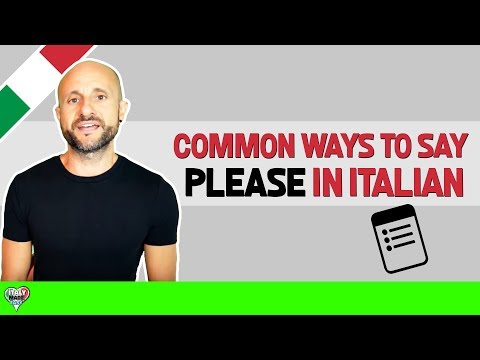Interacting with native Italian speakers
Keep in mind that most Italians don’t speak much English, and if they do, it’s mostly a little maccheronico: a broken English heavily filled with facial expressions, body language, and the inevitable hand gestures that are the signature of every Italian speaker.
The accent, syntax, and vocabulary of English and Italian are very different, and Italians are often nervous while speaking English.
If you master a few key phrases in Italian, you can put your Italian friends at ease when speaking with them, allowing them to communicate more efficiently and effortlessly.
You don’t have to wait until you’re fluent in communicating with native Italian speakers; even a few phrases in Italian will make them feel relaxed and thankful.
Italians are often very receptive to persons who are learning their mother tongue; they will often be happy to chat with you and assist you in practice, and you will quickly form a bond.
Starting with simple everyday expressions like saying hello and goodbye, please and thank you, ordering meals in a restaurant, and making small talk are one of the best methods to begin learning Italian.
You will not only learn some Italian words and phrases this way, but you will also be able to communicate in your target language from the beginning.
Even with basic phrases, though, it’s crucial to consider nuances and connotations.
For example, there are several ways to say please in Italian, each of which may be appropriate in different situations.
How to say please in Italian?
There are a few ways ‘please’ can be translated into the Italian language, and you need them depending on the situation. As you know already, in formal situations you need to use formal expressions.
A simple ‘please’ can be more complicated than it looks. Just saying ‘per favore,’ or ‘per piacere’ to make a polite request may not be enough in some moments.
It’s a good idea to research all the options and choose the best one for your situation.
Here are the best and most common expressions you can say please in Italian.
Basic phrases to say please in Italian
Per favore
‘Per favore’ is one of the first Italian phrases you will learn in any course of this beautiful language. It’s very easy and it literally means ‘as for favour.’
You can use it in the majority of situations, with your friends, family situations, and colleagues.
A typical phrase is “the bill please” in Italian:
- Il conto per favore
Per piacere
This is another way of saying ‘per favore.’ or please in Italian. It’s commonly used and can also be used in most informal citations. It literally translates as “for favour/courtesy.”
It is similar to the archaic and very polite English expression ‘If you please’ or ‘As you please’.
Just like per favore, this phrase is acceptable in most situations.
Per cortesia
‘Per cortesia’ can be a formal way of saying please in Italian. Instead of using ‘per piacere’ or ‘per favore,’ use this one whenever you’re in formal situations.
You can use it whenever you’re talking to older people, strangers, waitresses, or your boss.
Ti prego / La prego / Vi prego
The informal expression ti prego sounds dramatic, like a child begging for a toy or a victim begging for mercy.
La prego is the formal version of ti prego, and should be used when talking to strangers, older adults, or those with a higher status such as your boss, whereas vi prego is used when addressing more than one person.
Si prega di…
This is not a very common way of saying please in Italian. It’s used for very polite and formal situations and it’s usually not directed towards one person or group, but for a large audience.
You may hear it on television in official speeches rather than in daily life.
Cortesemente
Cortesemente means courteously or kindly, but in some contexts, please is also a suitable translation. It is normally used in written communication or very formal spoken situations.
Note that it can be combined with phrases such as si prega and La prego for extra emphasis.
Gentilmente
Gentilmente is very similar in meaning to cortesemente, also appearing frequently in written correspondences or formal speech.

How to say thank you in Italian
Of course, you will also need to say thank you in Italian to make the conversation complete. There are many ways of expressing your gratitude towards someone.
Here are some ways of saying thank you in the Italian language!
- Grazie. – Thank you.
- Ti ringrazio (informal) /La ringrazio (formal). – Thank you.
- I miei ringraziamenti – All my gratitude
- Porgo i miei più sinceri ringraziamenti.- I offer you my sincerest thanks.
- Grazie mille / mille grazie. – Thanks a million.
- Grazie tante. – Thanks a lot.
- Molte grazie. – Many thanks.
- Grazie di tutto. – Thanks for everything.
- Lo apprezzo tanto. – I really appreciate it.
- Grazie di cuore. – Thanks from the heart.
- Grazie dal più profondo del cuore. – Thanks from the depth of my heart.
- Grazie infinite. – Infinite thanks.
- Grazie di nuovo. – Thanks again.
- Grazie ancora. – Thanks again.
- Le/Ti sono grata/o. – I’m grateful to you.
- Non ho parole per ringraziarti/ringraziarla. – I don’t have words to thank you.
In the Italian culture, politeness is very important, and Italian will always respond to any thank you, with a proper you’re welcome.
How to say you’re welcome in Italian
How to answer “thank you”? You’re welcome!
- Di niente, non era niente – You’re welcome; it was nothing
This is an attempt to take away the weight of the action, especially if one party is bound to feel indebted to the other.
The phrase in the target language means that you did not go out of your way to help, and there was no inconvenience.
- È il minimo che avrei potuto fare – It’s the least I could have done
You use this to show that you were willing to do more if you were in a position to. It is also ideal when there is a relationship of mutual benefit between two parties.
- Non menzionarlo – Don’t mention it
This is a casual expression and should be used when there is shared familiarity. When this phrase is used, it means your actions were not driven by a need to get recognition, and it was a pleasure to assist.
- Non è un problema – Not a problem
This can be used for both formal and informal conversations. It dismisses the notion that anything you are to do for someone might be inconvenient.
- È stato un piacere – It was my pleasure
It portrays a shared benefit level, and you did not mind helping. It is formal and can be interpreted to mean that you enjoyed assisting.
- Sono sempre felice di aiutare – I am always happy to help
The phrase showcases a certain level of enthusiasm to be of assistance to anyone and at any time. It can be used for formal conversations and informal ones.
- Nessun problema – No worries
It can be interpreted to mean “that should not worry you.” It is an appropriate response when the expression of gratitude turns into a concern for any inconvenience caused.
- In qualsiasi momento – Anytime
This shows an openness to be helpful whenever there is a need. It is not ideal for formal settings since it comes off as vague.
Please! Learn more Italian!
Now you know how to say please in Italian, and of course, go ahead and have a real conversation with a native!
By the way, do you know how to say hello in Italian? How are you in Italian? Happy birthday in Italian? Goodbye in Italian? And thank you in Italian?









